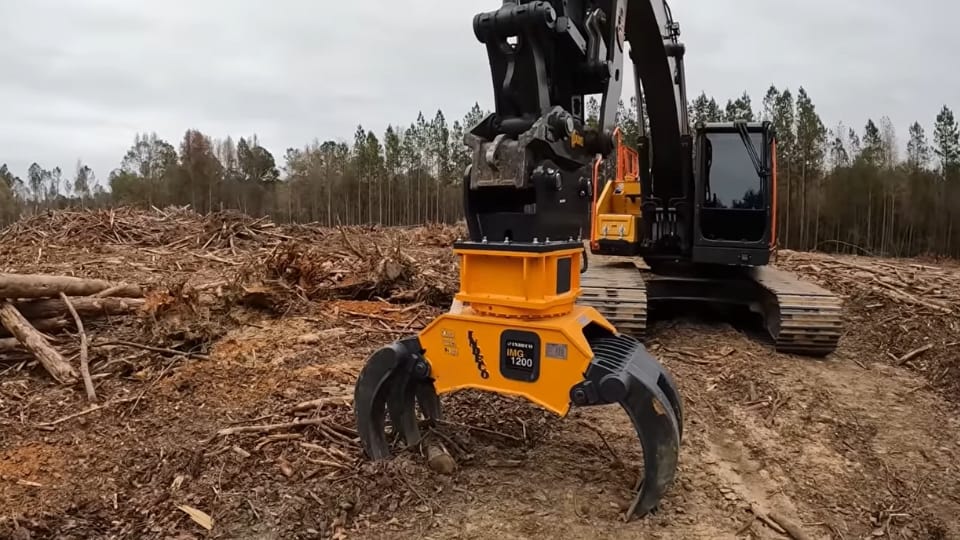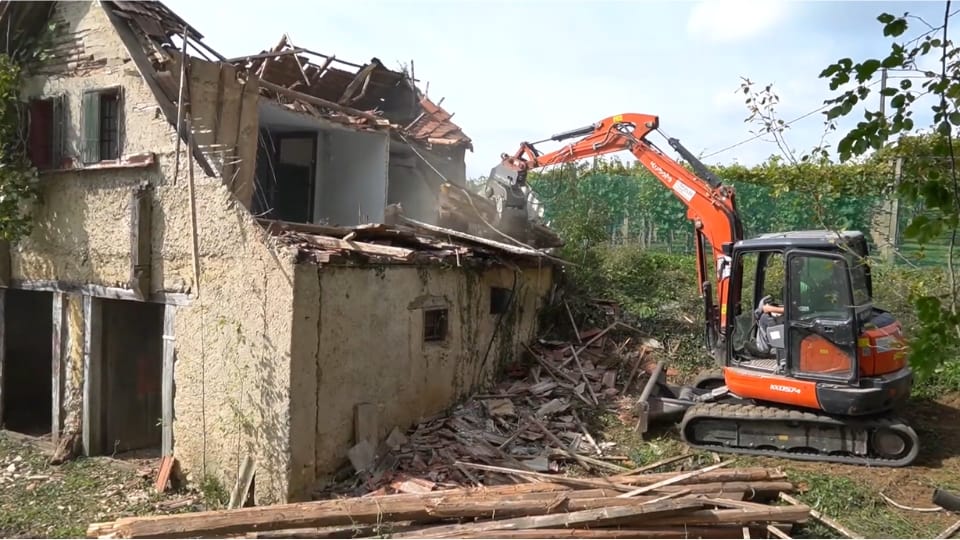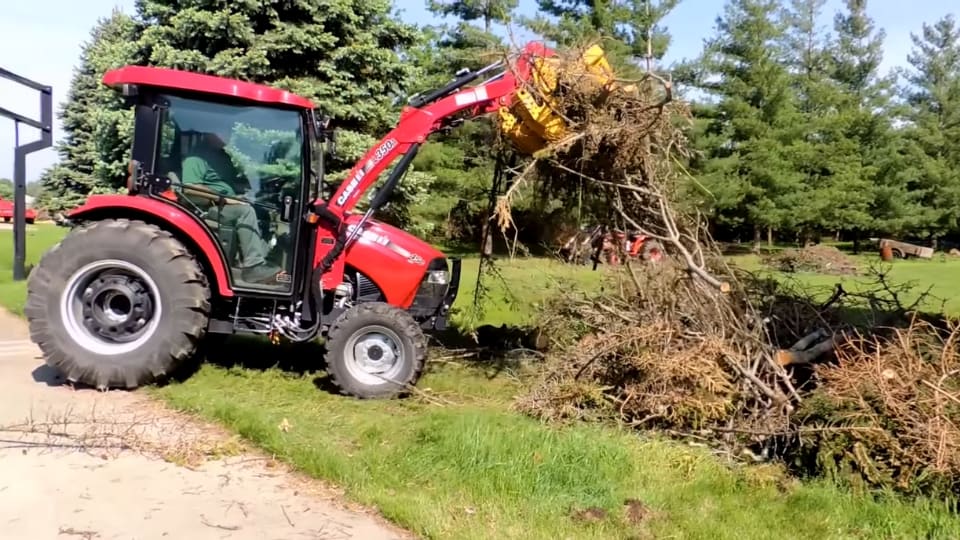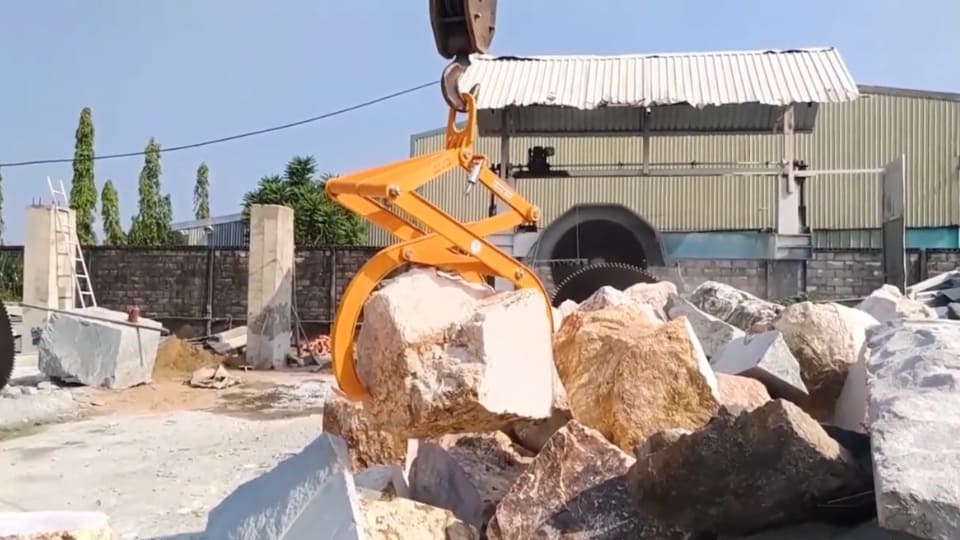Small excavators are becoming popular in the equipment industry due to their versatility and efficiency in handling different tasks. However, these compact machines require compatible attachments to maximize their capabilities. Despite their size, mini power attachments are designed to handle heavy-duty tasks, making them an excellent investment for any project.
Unlike conventional bucket and thumb setups, mini excavator grapple offers superior functionality and durability, enabling operators to accomplish various tasks quickly. With the ability to securely hold and move different materials, including rocks, logs, brush, and debris, the mini excavator grapple is a reliable and efficient tool that delivers excellent value for money.
It consists of jaws operated hydraulically and can be opened and closed to grasp and lift materials such as rocks, logs, brushes, and debris. Mini excavator grapples come in different sizes and shapes, depending on the specific application and the size of the excavator. They are commonly used in landscaping, forestry, construction, and demolition projects.
A mini excavator grapple can provide several benefits, such as increased efficiency, improved safety, and reduced labor costs. The grapple allows the operator to pick up and move larger amounts of material in one go, reducing the need for manual labor and increasing the speed of the project.
Types of mini excavator Grapple
Several types of mini excavator grapples are available in the market, each designed to handle specific materials and tasks.
Fixed Thumb Grapple:
This type of grapple is fixed onto the excavator’s bucket and has a thumb-like extension that helps secure the picked-up material. Fixed thumb grapples are ideal for handling large, bulky materials such as rocks, logs, and debris.
Rotating Grapple:
A rotating grapple is designed to rotate up to 360 degrees, providing flexibility and ease of operation. These grapples come with a hydraulic motor that enables the operator to rotate the attachment to any position required. Rotating grapples are ideal for loading and unloading materials from different angles.

Demolition Grapple:
A grapple is made for heavy-duty tasks such as demolition, site preparation, and land clearing. These grapples are built with high-strength materials and can handle tough materials such as concrete and steel.

Scrap Grapple:
A scrap grapple is designed for handling scrap materials such as metal, wires, and pipes. These grapples come with sharp teeth and withstand the harsh conditions of scrap yards and recycling facilities.

Brush Grapple:
A brush grapple is great for handling soft materials such as brushes, branches, and foliage. These grapples come with wider tines and a more open design to accommodate larger materials.

Log Grapple:
A mini excavator log grapple is specifically designed for handling logs and timber. These grapples come with a narrow and elongated design to fit around the logs and secure them tightly during transport.
Rock Grapple:
A rock grapple is designed to handle large, heavy materials such as boulders and rocks. These grapples come with reinforced tines and a more compact design to handle the weight and size of the material.

How to use mini excavator Grapple?
Using a mini excavator grapple can be a simple and effective process if you follow these basic steps:
Inspect the Grapple: Before use, inspect the grapple for any damage, cracks, or loose parts. Ensure the hydraulic lines are connected correctly, and the grapple is securely attached to the excavator.
Position the Excavator: Position the excavator before the material is picked up, ensuring the tracks are stable and the machine is level.
Open the Grapple: Using the excavator controls, open the grapple jaws wide enough to fit around the picked-up material. Ensure the tines are positioned correctly to prevent the material from slipping.
Lower the Grapple: Slowly lower the grapple over the material until the tines securely hold it. Make sure the grapple is level and that the material is not overloaded.
Lift the Grapple: Use the excavator controls to lift the grapple and the material off the ground. Make sure to lift the material slowly and steadily to avoid swinging or dropping it.
Move the Grapple: Once the material is lifted, use the excavator to move it to the desired location. Use the grapple to reposition the material before setting it down if necessary.
Release the Grapple: The material is in place; use the excavator controls to release the grapple jaws and drop the material. Make sure to release the grapple slowly to prevent any sudden movements.
The table of specifications of the mini excavator Grapple
| Specification | Description |
|---|---|
| Weight | 200-400 lbs |
| Jaw opening width | 24-48 inches |
| Jaw depth | 16-24 inches |
| Material | High-strength steel or aluminum construction |
| Hydraulic power | 2,000-3,000 PSI hydraulic pressure |
| Hydraulic flow | 12-20 GPM hydraulic flow rate |
| Number of tines | 3-5 |
| Tine thickness | 0.5-1.5 inches |
| Tine spacing | 8-12 inches |
| Mounting type | Compatible with most mini excavator attachment plates |
| Operating pressure | 2200 psi |
The specifications depend on the manufacturer and model of the mini excavator grapple. It’s important to check the manufacturer’s specifications to ensure compatibility with your mini excavator and the tasks you need to perform.
How to remove mini excavator Grapple
Removing a mini excavator grapple can be a straightforward process if you follow these basic steps:
- Lower the grapple to the ground or a stable surface, ensuring the material is secure and will not shift during removal.
- Turn off the excavator and disconnect the hydraulic lines that connect the grapple to the excavator. Make sure to relieve any pressure in the hydraulic lines before disconnecting them.
- Look for the retaining pins that hold the grapple onto the excavator attachment plate or coupler. Use a hammer and a punch to remove the pins by driving them out from the opposite side.
- Once the retaining pins are removed, use the excavator to lift the grapple off the attachment plate or coupler. Make sure to lift the grapple slowly and smoothly, keeping it level to prevent sudden movements.
- Once the grapple is removed, inspect it for any damage or wear and tear. Clean the grapple and store it in a dry, safe location.
- It is important to follow all safety guidelines and instructions provided by the grapple manufacturer and the excavator operator manual.
Uses of mini excavator Grapple
Mini excavator grapples are versatile tools for various applications in different industries. Here are some of the different uses of mini excavator grapples in detail:
Landscaping: Mini excavator grapples are used to move and place rocks, logs, and other heavy objects. With their ability to grip and hold large objects securely, grapples make it easier to move and place objects precisely, reducing the risk of damage to surrounding areas.
Construction: Mini excavator grapples are used to move and place concrete, steel, and lumber materials. Grapples are ideal for moving large or awkwardly shaped objects and can help speed up construction.
Demolition: Mini excavator grapples are often used to remove and clear debris from demolition sites. The grapple can pick up and move large pieces of debris such as concrete, metal, and wood, reducing the time and labor required to clean up a site.
Forestry: Mini excavator grapples are ideal for forestry work such as logging and land clearing. The grapple can easily pick up and move large trees and logs, reducing the risk of injury and making the process more efficient.
Recycling: Mini excavator grapples are used in recycling facilities to move and sort recyclable materials such as scrap metal, plastic, and paper. Grapples can quickly and efficiently pick up and move large volumes of material, making the sorting process faster and more efficient.
Agriculture: Mini excavator grapples are used in agriculture for various tasks such as cleaning up debris, moving large hay bales, and transporting heavy equipment. Grapples can help farmers and ranchers save time and labor while performing various property tasks.
The verdict
Mini excavator grapples are highly useful tools for various applications in various industries. With their ability to grip and hold large objects securely, grapples make it easier to move and place objects precisely, reducing the risk of damage to surrounding areas. You can contact us for further information about the mini excavator grapples.

